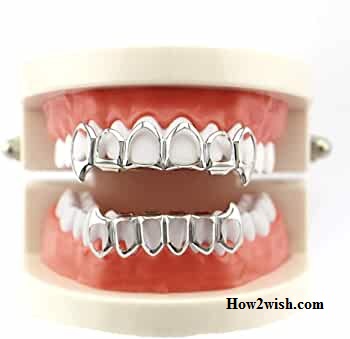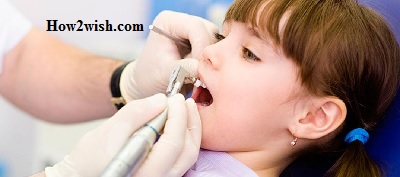The number of factors that negatively affect the state of the elements of dentition in childhood, as a rule, is even greater than in adults. Kids actively lean on sweets and starchy foods, spend time in outdoor games, and are not very responsible for the implementation of hygiene procedures necessary for the prevention of common dental diseases. As a result, the formation of dark spots on the enamel indicates the development of caries. However, not always a change in appearance is a sign of pathology. It is possible that the parents and the young patient have already visited dentistry and decided to use a special option to protect the surface of the crowns. What is it – a method of silvering teeth, why do children silver teeth and milk teeth units, and what will the child’s smile look like after applying the composition?

General view
The technique, which involves coating the damaged area of enamel with silver teeth, has been used in dental practice for a long time. Today, there are definitely more convenient and effective ways to treat caries and other pathological processes, but it would be foolish to deny the antimicrobial properties characteristic of this metal. In cases where the disease is at an early stage of development – the enamel is only still becoming loose, and the bacteria gradually begin to “master” the cellular territory – it is very problematic to diagnose the pathology during a visual examination. Silvering teeth and milk teeth are usually offered as one the options that are relevant at the stage of formation of “chalk spots” since the formed metal film protects the tissues from further damage and destruction.
At what age is the procedure recommended?
One of the advantages of using the composition is the absence of pain, which allows you to do without anesthetics. As a result, the technique is suitable for the treatment and prevention of caries in children of the younger age group, that is, up to the age of three. Most young patients are not eager to voluntarily go to the dental office, where the sound of a drill comes from, while children even like the process of coating milk teeth with silver teeth – the treatment is more like painting with a brush and causes only a slight tickling feeling.
A solution of silver teeth nitrate at a concentration of 30% is applied to the problem unit with a swab, which is left in the mouth for two to three minutes. This time is quite enough for the formation of a thin film that protects the adjacent areas of the enamel and the elements of the row. It is worth noting that the general course provides for several visiting sessions, the difference between which is 4-5 days. In the end, the doctor writes out a list of further recommendations, the observance of which helps to avoid more serious consequences.
Why is it important to save every milk tooth?
The temporary set plays an important role in the formation and development of the jaw section, therefore, at the first signs of caries, you should immediately contact your dentist. Functional tasks performed by primary units include:
- Protection of the rudiments of indigenous elements. A continuously progressing carious focus is quite capable of spreading to crowns that have not yet erupted and destroying their structure inside the jaw tissue.
- Formation of a natural bite. Premature loss of one or more baby teeth leads to an incorrect distribution of the chewing load, a shift in the row, and, ultimately, abnormal occlusion that provokes more serious health problems.
- Ensuring the functional state of the body. Insufficiently thorough processing of food, which the child passes by the end of the first year of life, leads to disturbances in the digestive system, which threatens to turn into problems with the stomach.
In addition, do not forget about the aesthetics of a smile, as well as the development of diction. The presence of “gaps” causes both physical and psychological discomfort in children and can lead to complexes in communicating with others.

Silver teeth Indications and contraindications
Among the factors that determine the feasibility of the procedure, include:
- Diagnosed thinning of the enamel coating.
- Detection of small chips and cracks.
- The presence of chalk spots on one or more units.
- Complaints about the periodic manifestation of stomatitis.
- High sensitivity to temperature changes.
- Installation of a seal requiring additional protection.
At the same time, there are certain restrictions, the exclusion of which is a prerequisite at the stage of preliminary examination:
- The child is over three years of age.
- The spread of the carious focus in the structure of the dentin.
- Damage to the pulp chamber.
- Identification of allergies to the components of the composition.
- Severe or exacerbated somatic pathologies.
- Increased fluoride intake, including water.
In cases where these points do not correspond to the clinical picture, the treatment of caries by the silvering method is considered possible.
Silver Teeth Advantages and disadvantages
Benefits of the procedure include:
- Absence of pain and risk to the health of the baby.
- Possibility to keep the milk tooth intact.
- A small list of limiting medical factors.
The negative aspects include, first of all, the darkening of the treated area of enamel, which can also cause psychological discomfort that interferes with normal communication with others. In addition, the technique is ineffective for the treatment of chewing units, as well as for medium and deep forms of caries.
Silver Teeth Additional rules and guidelines
The considered method is designed to delay the expansion of the carious focus. If the child has already silvered teeth, the likelihood of a rapid defeat of adjacent crowns is temporarily reduced. At the same time, it is important to observe the frequency of treatment established by the doctor, as well as adhere to the general requirements regarding the hygienic state of the oral cavity.
Before the start of the session, kids, with the help of adults, clean the surface with a soft brush and paste. The presence of plaque formed from pathogenic microbes increases the risk of developing enamel-damaging acid. In cases where treatment for infectious pathology was carried out, two weeks after completion, it is recommended to visit the dentist again, as well as to perform the procedure in question more often. This, among other things, concerns the diagnosis of tonsillitis and otitis media, stomatitis, and inflammatory processes in the adenoids, as well as the occurrence of problems with the functioning of the gastrointestinal tract.
How is the processing of silver teeth
If you look at any photo posted on the network, what silver-plated teeth look like in children, you can roughly estimate the expected result. It is achieved quite simply, but it is possible only when the milk elements of the series require treatment or prevention. The technique is absolutely painless, the duration of the session varies within half an hour, depending on the number of processed elements.
At the initial stage, the doctor conducts an examination of the oral cavity, assessing the general condition. If necessary, additional cleaning of the enamel is performed, which excludes infection of vulnerable areas. Further, the surface is covered with a solution based on silver nitrate, the chemical reaction of which leads to the blocking of the dentinal canals and the blocking of free bacterial access to their internal structure.

How to Use and Brush Your Teeth with an Electric Toothbrush
It is worth noting that over time, the resulting film loses its original characteristics, which is why the procedure has to be repeated in accordance with the appointed schedule. When discussing whether it is worth silvering a child’s teeth, and why and how children are silvered teeth, it should be remembered that in the case of indigenous units, this technique is not used – the surface of the enamel darkens after processing, significantly reducing the aesthetics of a smile.
Alternative Options
As an option that allows you to get a similar result and at the same time do without the use of “silver”, the process of fluoridation, also known as remineralization therapy, is used. The recovery course provides for the enrichment of the enamel coating with strengthening compounds that prevent destructive processes. Saturation with fluorine strengthens the outer protective layer of the crown, makes it resistant to destruction due to pathology, and at the same time retains its natural shade without affecting aesthetic performance. The procedure is allowed for appointment to patients over the age of four years and also serves as a prevention of the spread of caries in the initial stage.
Which is better: fluoridation or silvering of teeth
If we talk exclusively about the preventive function, that is, the prevention of enamel damage, then each of the presented protocols equally successfully copes with this task. The advantage of using formulations with a high concentration of fluorine is the absence of a side effect in the form of darkening of the treated areas. On the contrary, competent processing even allows you to improve the shade by several tones – although, in the case of dairy units, this is usually not a critical aspect.
Common myths about silvering teeth
In the philistine environment, there are many stereotypes associated with a methodology that has been used in practice for more than a decade. Consider the most popular to understand how they correspond to reality:
- For the anterior temporary elements of the dentition, only treatment with silver teeth nitrate is suitable, since filling these teeth with composite materials is not possible. In fact, this is not the case – moreover, such a practice is fraught with negative consequences in cases where the purpose of the procedure does not correspond to diagnostic indicators. At a deeper stage of the lesion, there is a possibility of further progression of caries under the formed film, due to which the internal structure of the units may be completely destroyed.
- The technique allows you to cope with any possible form of carious lesions. In reality, no. The spectrum of symptomatic manifestations covered is limited to chalky spots formed in the early stages, as well as the roughness of the enamel coating. With multiple or deep lesions of the surface, restoration is recommended using composites that protect the base and prevent abnormal bite development.
- Foreign preparations used for silvering teeth do not lead to staining in a dark color. Today, in dental practice, both domestic and imported compositions are used, which differ in the number of components and, in part, in their characteristics. However, the result remains unchanged – both in the first and in the second case, the enamel coating becomes dark brown or black – depending on the specifics of a particular clinical picture.
- The shade change is temporary. And again no. The film that forms on the surface of damaged enamel really loses its original density over time and loses its protective properties. However, this fact does not affect the consequences in the form of pigmentation, which cannot be washed off with a paste, rinse, or powder for hygiene care.
- The effectiveness of silvering teeth is much higher than when using compositions with a high fluorine content. The preventive effect created by fluorine is based on accelerating the rate of restoration of the balance of minerals in tooth enamel. Such a reaction determines the expediency of using the technique to prevent the spread of primary caries, as well as to strengthen the structure of replaceable crowns.
Silvering teeth milk teeth: pros and cons
Speaking about the pros and cons, first of all, one should take into account not only the medical indications that serve as the basis for treatment but also the consequences that may affect the child’s overall perception of dental intervention. On the one hand, the procedure is painless and does not cause physical discomfort – however, before starting it, the doctor must make sure that the surface of the enamel is clean, and if necessary, clean it himself. Such processing is already more tangible and can cause a negative reaction. In addition, many children perceive the darkening of one or more crowns negatively – especially after they learn about the impossibility of whitening them.

It is also worth considering that with improperly performed treatment – more precisely, with an incorrect diagnosis that characterizes the degree of spread of caries – there is a possibility that the pathology will become more serious. It will be possible to diagnose the problem only with the help of an x-ray photo – the teeth in children after silvering are covered with a silver film, through which it is not possible to visually determine the presence of pulpitis. As a result, the element of the series, which could be saved with timely medical intervention, turns out to be subject to removal.
Ultimately, the decision on whether to carry out the procedure is made by the parents based on the recommendations of the attending physician. It is important to remember two factors: a solution based on silver nitrate does not cure caries, but only stops its spread for a while, while the consequences in the form of a dark spot that violates the beauty of a smile will remain until the temporary falls out and the root unit erupts. By contacting the specialists of Dentika dental centers, you can clarify all issues related to the prevention and hygiene of the oral cavity in childhood, and get detailed advice from qualified doctors.
Preventive advice about silver teeth
To avoid the difficulties associated with choosing the right technique, you should follow simple rules:
- Attend routine check-ups regularly and teach your child proper brushing techniques.
- Periodically undergo professional oral hygiene.
- Strengthen enamel and maintain mineral balance with the help of special tools.
- Seal the fissures of the molars – in order to avoid new diseases.
Timely diagnosis of a pathological condition significantly facilitates treatment and helps to preserve the elements of the series until the moment of natural renewal.
Summing up
The method of silvering teeth allows you to temporarily stop the process of expanding the carious focus that occurs in the structure of milk units against the background of the influence of external factors. With the development of technologies and materials, the procedure has become less relevant, which is caused by the darkening of the crowns after the procedure, as well as the emergence of alternative treatment options in childhood.